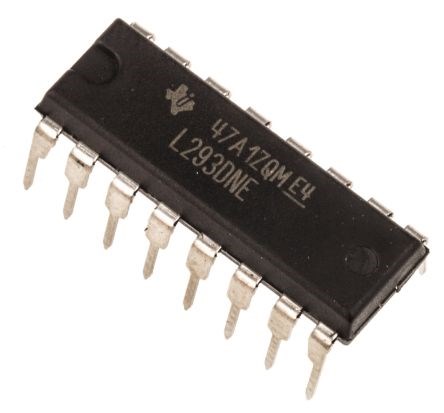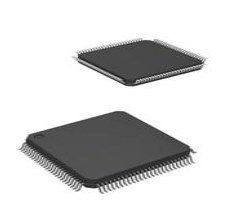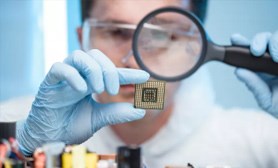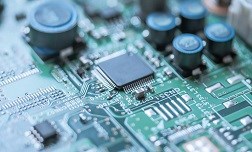AD7572 Analog to Digital Converter: High-Performance Data Acquisition Solution
12 Bit 2.54mm ADC AD7572 5V 24-CDIP (0.300, 7.62mm)
Unit Price: $267.286361
Ext Price: $267.29









12 Bit 2.54mm ADC AD7572 5V 24-CDIP (0.300, 7.62mm)
The AD7572 is a high-performance analog to digital converter (ADC) manufactured by Analog Devices Inc. This through-hole device offers a resolution of 12 bits and operates on a single-ended input type. With its internal reference and parallel data interface, the AD7572 provides accurate and reliable data acquisition capabilities. This article will delve into the features, applications, reference designs, alternative parts, and frequently asked questions about the AD7572 ADC.
Product Introduction
1. Description:
The AD7572 is a versatile ADC designed for precision data acquisition applications. It utilizes the successive approximation register (SAR) architecture, which allows for high-speed conversion with low power consumption. The ADC offers a resolution of 12 bits, providing precise and accurate digital representation of analog signals. With a supply voltage range of 5V to -15V, the AD7572 can handle a wide range of input voltages.
2. Features:
- 12-bit resolution: The AD7572 offers a high-resolution conversion, ensuring accurate and detailed representation of analog signals.
- Single-ended input: The ADC supports single-ended input, simplifying the connection and integration process.
- Internal reference: The AD7572 features an internal reference, eliminating the need for an external voltage reference.
- Parallel data interface: The ADC utilizes a parallel data interface, enabling fast and efficient data transfer.
- Low power consumption: With a power dissipation of 135mW, the AD7572 minimizes power consumption while maintaining high performance.
- Wide operating temperature range: The ADC can operate in extreme temperature conditions ranging from -55°C to 125°C.
3. Applications:
The AD7572 ADC finds applications in various industries and systems that require accurate data acquisition. Some primary applications include:
- Industrial automation: The ADC can be used in industrial automation systems to convert analog sensor readings into digital data for further processing and control.
- Test and measurement equipment: The AD7572 is suitable for test and measurement equipment that requires precise and reliable data acquisition capabilities.
- Medical devices: The ADC can be integrated into medical devices for data acquisition tasks, such as monitoring vital signs or analyzing bioelectrical signals.
- Communication systems: The AD7572 can be utilized in communication systems to convert analog signals into digital data for processing and transmission.
Secondary applications of the AD7572 include automotive systems, power monitoring, instrumentation, and control systems. The ADC can be used alongside specific modules such as microcontrollers, DSPs, and FPGA boards to create a complete data acquisition solution.
4. Reference Designs:
Analog Devices Inc. provides reference designs that utilize the AD7572 ADC. These reference designs serve as a starting point for engineers and developers to implement the ADC in their specific applications. Some notable reference designs include:
- Precision Data Acquisition System: This reference design showcases the AD7572's capabilities in a precision data acquisition system, providing guidelines for layout, power supply, and signal conditioning.
- Industrial Automation Controller: This reference design demonstrates the integration of the AD7572 in an industrial automation controller, highlighting its performance in real-time data acquisition and control.
5. Alternative Parts:
In case the AD7572 is not readily available or doesn't meet specific requirements, there are alternative ADCs that can be considered. Some alternative parts include:
- AD7574: This ADC offers similar features and performance as the AD7572 but with a higher resolution of 14 bits.
- AD7626: The AD7626 is a higher-speed ADC with a resolution of 16 bits, making it suitable for applications that require faster conversion rates and higher precision.
6. FAQs:
Q1: Is the AD7572 compatible with both through-hole and surface mount mounting types?
A1: No, the AD7572 is only available in a through-hole package.
Q2: Can the AD7572 operate with a single power supply voltage?
A2: Yes, the AD7572 can operate with a single supply voltage ranging from 5V to -15V.
Q3: Does the AD7572 require an external voltage reference?
A3: No, the ADC has an internal reference, eliminating the need for an external voltage reference.
Q4: Is the AD7572 RoHS compliant?
A4: No, the AD7572 is non-RoHS compliant and contains lead.
In conclusion, the AD7572 ADC from Analog Devices Inc. offers high-performance data acquisition capabilities with its 12-bit resolution, single-ended input, and internal reference. It finds applications in various industries and systems, including industrial automation, test and measurement equipment, and medical devices. Engineers can utilize reference designs provided by Analog Devices Inc. to implement the ADC effectively. In case the AD7572 is not available, alternative parts such as the AD7574 and AD7626 can be considered.
Specifications
- TypeParameter
- Lifecycle Status
Lifecycle Status refers to the current stage of an electronic component in its product life cycle, indicating whether it is active, obsolete, or transitioning between these states. An active status means the component is in production and available for purchase. An obsolete status indicates that the component is no longer being manufactured or supported, and manufacturers typically provide a limited time frame for support. Understanding the lifecycle status is crucial for design engineers to ensure continuity and reliability in their projects.
PRODUCTION (Last Updated: 6 days ago) - Factory Lead Time12 Weeks
- Mounting Type
The "Mounting Type" in electronic components refers to the method used to attach or connect a component to a circuit board or other substrate, such as through-hole, surface-mount, or panel mount.
Through Hole - Package / Case
refers to the protective housing that encases an electronic component, providing mechanical support, electrical connections, and thermal management.
24-CDIP (0.300, 7.62mm) - Surface Mount
having leads that are designed to be soldered on the side of a circuit board that the body of the component is mounted on.
NO - Number of Pins24
- Operating Temperature
The operating temperature is the range of ambient temperature within which a power supply, or any other electrical equipment, operate in. This ranges from a minimum operating temperature, to a peak or maximum operating temperature, outside which, the power supply may fail.
-55°C~125°C - Packaging
Semiconductor package is a carrier / shell used to contain and cover one or more semiconductor components or integrated circuits. The material of the shell can be metal, plastic, glass or ceramic.
Tube - JESD-609 Code
The "JESD-609 Code" in electronic components refers to a standardized marking code that indicates the lead-free solder composition and finish of electronic components for compliance with environmental regulations.
e0 - Pbfree Code
The "Pbfree Code" parameter in electronic components refers to the code or marking used to indicate that the component is lead-free. Lead (Pb) is a toxic substance that has been widely used in electronic components for many years, but due to environmental concerns, there has been a shift towards lead-free alternatives. The Pbfree Code helps manufacturers and users easily identify components that do not contain lead, ensuring compliance with regulations and promoting environmentally friendly practices. It is important to pay attention to the Pbfree Code when selecting electronic components to ensure they meet the necessary requirements for lead-free applications.
no - Part Status
Parts can have many statuses as they progress through the configuration, analysis, review, and approval stages.
Active - Moisture Sensitivity Level (MSL)
Moisture Sensitivity Level (MSL) is a standardized rating that indicates the susceptibility of electronic components, particularly semiconductors, to moisture-induced damage during storage and the soldering process, defining the allowable exposure time to ambient conditions before they require special handling or baking to prevent failures
3 (168 Hours) - Number of Terminations24
- Terminal Finish
Terminal Finish refers to the surface treatment applied to the terminals or leads of electronic components to enhance their performance and longevity. It can improve solderability, corrosion resistance, and overall reliability of the connection in electronic assemblies. Common finishes include nickel, gold, and tin, each possessing distinct properties suitable for various applications. The choice of terminal finish can significantly impact the durability and effectiveness of electronic devices.
Tin/Lead (Sn/Pb) - Max Power Dissipation
The maximum power that the MOSFET can dissipate continuously under the specified thermal conditions.
215mW - Terminal Position
In electronic components, the term "Terminal Position" refers to the physical location of the connection points on the component where external electrical connections can be made. These connection points, known as terminals, are typically used to attach wires, leads, or other components to the main body of the electronic component. The terminal position is important for ensuring proper connectivity and functionality of the component within a circuit. It is often specified in technical datasheets or component specifications to help designers and engineers understand how to properly integrate the component into their circuit designs.
DUAL - Peak Reflow Temperature (Cel)
Peak Reflow Temperature (Cel) is a parameter that specifies the maximum temperature at which an electronic component can be exposed during the reflow soldering process. Reflow soldering is a common method used to attach electronic components to a circuit board. The Peak Reflow Temperature is crucial because it ensures that the component is not damaged or degraded during the soldering process. Exceeding the specified Peak Reflow Temperature can lead to issues such as component failure, reduced performance, or even permanent damage to the component. It is important for manufacturers and assemblers to adhere to the recommended Peak Reflow Temperature to ensure the reliability and functionality of the electronic components.
NOT APPLICABLE - Number of Functions1
- Supply Voltage
Supply voltage refers to the electrical potential difference provided to an electronic component or circuit. It is crucial for the proper operation of devices, as it powers their functions and determines performance characteristics. The supply voltage must be within specified limits to ensure reliability and prevent damage to components. Different electronic devices have specific supply voltage requirements, which can vary widely depending on their design and intended application.
5V - Terminal Pitch
The center distance from one pole to the next.
2.54mm - Reach Compliance Code
Reach Compliance Code refers to a designation indicating that electronic components meet the requirements set by the Registration, Evaluation, Authorization, and Restriction of Chemicals (REACH) regulation in the European Union. It signifies that the manufacturer has assessed and managed the chemical substances within the components to ensure safety and environmental protection. This code is vital for compliance with regulations aimed at minimizing risks associated with hazardous substances in electronic products.
not_compliant - Time@Peak Reflow Temperature-Max (s)
Time@Peak Reflow Temperature-Max (s) refers to the maximum duration that an electronic component can be exposed to the peak reflow temperature during the soldering process, which is crucial for ensuring reliable solder joint formation without damaging the component.
NOT APPLICABLE - Base Part Number
The "Base Part Number" (BPN) in electronic components serves a similar purpose to the "Base Product Number." It refers to the primary identifier for a component that captures the essential characteristics shared by a group of similar components. The BPN provides a fundamental way to reference a family or series of components without specifying all the variations and specific details.
AD7572 - Pin Count
a count of all of the component leads (or pins)
24 - Qualification Status
An indicator of formal certification of qualifications.
Qualified - Polarity
In electronic components, polarity refers to the orientation or direction in which the component must be connected in a circuit to function properly. Components such as diodes, capacitors, and LEDs have polarity markings to indicate which terminal should be connected to the positive or negative side of the circuit. Connecting a component with incorrect polarity can lead to malfunction or damage. It is important to pay attention to polarity markings and follow the manufacturer's instructions to ensure proper operation of electronic components.
Unipolar - Configuration
The parameter "Configuration" in electronic components refers to the specific arrangement or setup of the components within a circuit or system. It encompasses how individual elements are interconnected and their physical layout. Configuration can affect the functionality, performance, and efficiency of the electronic system, and may influence factors such as signal flow, impedance, and power distribution. Understanding the configuration is essential for design, troubleshooting, and optimizing electronic devices.
ADC - Number of Channels1
- Number of Bits12
- Input Type
Input type in electronic components refers to the classification of the signal or data that a component can accept for processing or conversion. It indicates whether the input is analog, digital, or a specific format such as TTL or CMOS. Understanding input type is crucial for ensuring compatibility between different electronic devices and circuits, as it determines how signals are interpreted and interacted with.
Single Ended - Architecture
In electronic components, the parameter "Architecture" refers to the overall design and structure of the component. It encompasses the arrangement of internal components, the layout of circuitry, and the physical form of the component. The architecture of an electronic component plays a crucial role in determining its functionality, performance, and compatibility with other components in a system. Different architectures can result in variations in power consumption, speed, size, and other key characteristics of the component. Designers often consider the architecture of electronic components carefully to ensure optimal performance and integration within a larger system.
SAR - Reference Type
a code object that is not stored directly where it is created, but that acts as a kind of pointer to a value stored elsewhere.
Internal - Data Interface
A Data Interface in EDQ is a template of a set of attributes representing a given entity, used to create processes that read from, or write to, interfaces rather than directly from or to sources or targets of data.
Parallel - Resolution
Resolution in electronic components refers to the smallest increment of measurement or change that can be detected or represented by the component. It is a crucial specification in devices such as sensors, displays, and converters, as it determines the level of detail or accuracy that can be achieved. For example, in a digital camera, resolution refers to the number of pixels that make up an image, with higher resolution indicating a greater level of detail. In analog-to-digital converters, resolution is the number of discrete values that can be represented in the digital output, determining the precision of the conversion process. Overall, resolution plays a significant role in determining the performance and capabilities of electronic components in various applications.
1.5 B - Voltage - Supply, Analog
Voltage - Supply, Analog is a parameter in electronic components that specifies the range of voltage levels required to power the analog circuitry within the component. This parameter indicates the minimum and maximum voltage levels that the component can accept for proper operation of its analog functions. It is crucial to ensure that the voltage supplied to the component falls within this specified range to prevent damage and ensure optimal performance. Understanding and adhering to the "Voltage - Supply, Analog" parameter is essential for the proper functioning of analog circuits in electronic components.
5V -15V - Voltage - Supply, Digital
Voltage - Supply, Digital is a parameter that specifies the voltage level required to power the digital circuitry within an electronic component, such as an integrated circuit or a microcontroller. This parameter is crucial for ensuring proper operation of the digital components, as supplying the correct voltage level is essential for reliable performance. The specified voltage range typically includes both minimum and maximum values within which the component can operate safely and efficiently. It is important to adhere to the recommended voltage supply range to prevent damage to the component and to maintain the integrity of the digital signals being processed.
5V -15V - Number of Analog In Channels1
- Output Bit Code
Output Bit Code refers to the digital representation of the output signal of an electronic component, typically in binary form. It indicates the specific combination of bits that represent the output value of the component. The output bit code is crucial for interpreting and processing the output data accurately in digital systems. By understanding the output bit code, engineers can design appropriate circuits and algorithms to manipulate and utilize the output information effectively.
OFFSET BINARY, COMPLEMENTARY OFFSET BINARY - Power Consumption
Power consumption is the amount of input energy (measured in watts) required for an electrical appliance to function. This is opposed to power output which is a measure of the level of performance, of a heat pump for example.
135mW - Integral Nonlinearity (INL)
Integral Nonlinearity (INL) is a measure of the deviation of a transfer function from a straight line when considering the entire output range of a device, such as a digital-to-analog converter or an analog-to-digital converter. It is quantified as the maximum deviation of the actual output from the ideal output across the entire input range, expressed as a percentage of the full-scale output. INL indicates how closely the output follows a linear model, influencing the accuracy of the signal representation in electronic components. A lower INL value signifies better linearity and higher precision in signal processing applications.
1 LSB - Ratio - S/H:ADC
The parameter "Ratio - S/H:ADC" in electronic components refers to the ratio between the sample and hold (S/H) circuit and the analog-to-digital converter (ADC) in a system. The sample and hold circuit is responsible for capturing and holding the input signal at a specific moment in time, while the ADC converts this analog signal into a digital format for processing. The ratio between the S/H and ADC components is important as it determines the accuracy and speed of the analog-to-digital conversion process. A higher ratio typically indicates a more precise and efficient conversion process, leading to better overall performance of the electronic system. Engineers often consider this parameter when designing and optimizing electronic circuits to ensure reliable and high-quality signal processing.
0:1 - Analog Input Voltage-Max
Analog Input Voltage-Max refers to the maximum voltage level that can be safely applied to the input of an electronic component, such as an integrated circuit or sensor, without causing damage. This parameter is crucial for ensuring the proper functioning and longevity of the component. Exceeding the specified maximum input voltage can lead to overloading, overheating, or even permanent damage to the component. It is important for designers and engineers to carefully consider and adhere to this parameter when designing circuits or systems to prevent potential failures and ensure reliable operation.
2.5V - Negative Supply Voltage-Nom
The parameter "Negative Supply Voltage-Nom" in electronic components refers to the nominal voltage level that can be safely applied as the negative supply voltage to the component. This parameter is important for ensuring the proper functioning and reliability of the component within its specified operating conditions. It indicates the voltage level that the component is designed to operate with when a negative voltage supply is required. It is crucial to adhere to this specified voltage range to prevent damage to the component and maintain its performance characteristics.
-15V - Differential Nonlinearity
Differential Nonlinearity (DNL) is a parameter used to measure the deviation of the actual step size between two adjacent digital output codes in an analog-to-digital converter (ADC) or digital-to-analog converter (DAC) from the ideal step size. It quantifies the accuracy of the converter in maintaining consistent step sizes across the entire range of digital codes. DNL is typically expressed in terms of least significant bits (LSBs) and is an important factor in determining the overall performance and linearity of the converter. A lower DNL value indicates better linearity and accuracy in the conversion process, while a higher DNL value suggests potential errors and nonlinearity in the output signal.
1 LSB - Analog Input Voltage-Min
Analog Input Voltage-Min refers to the minimum voltage level that an electronic component or device can accept as an input signal in analog form. This parameter is crucial for ensuring proper functionality and performance of the component, as providing a voltage below this minimum level may result in inaccurate readings, errors, or even damage to the device. Designers and engineers need to consider this specification when designing circuits or systems to ensure that the input voltage provided falls within the acceptable range for reliable operation. It is important to adhere to the specified minimum input voltage to prevent any potential issues and maintain the integrity of the electronic component.
-2.5V - Height Seated (Max)
Height Seated (Max) is a parameter in electronic components that refers to the maximum allowable height of the component when it is properly seated or installed on a circuit board or within an enclosure. This specification is crucial for ensuring proper fit and alignment within the overall system design. Exceeding the maximum seated height can lead to mechanical interference, electrical shorts, or other issues that may impact the performance and reliability of the electronic device. Manufacturers provide this information to help designers and engineers select components that will fit within the designated space and function correctly in the intended application.
5.08mm - Width7.62mm
- RoHS Status
RoHS means “Restriction of Certain Hazardous Substances” in the “Hazardous Substances Directive” in electrical and electronic equipment.
Non-RoHS Compliant - Lead Free
Lead Free is a term used to describe electronic components that do not contain lead as part of their composition. Lead is a toxic material that can have harmful effects on human health and the environment, so the electronics industry has been moving towards lead-free components to reduce these risks. Lead-free components are typically made using alternative materials such as silver, copper, and tin. Manufacturers must comply with regulations such as the Restriction of Hazardous Substances (RoHS) directive to ensure that their products are lead-free and environmentally friendly.
Contains Lead
Parts with Similar Specs
- ImagePart NumberManufacturerPackage / CaseNumber of PinsNumber of BitsPolarityIntegral Nonlinearity (INL)Differential NonlinearitySupply VoltageInput TypeView Compare
5962-8759101LX
24-CDIP (0.300, 7.62mm)
24
12
Unipolar
1 LSB
1 LSB
5 V
Single Ended
24-CDIP (0.300, 7.62mm)
24
12
Unipolar
1 LSB
1 LSB
5 V
Single Ended
24-CDIP (0.300, 7.62mm)
24
12
Unipolar
1 LSB
1 LSB
5 V
Single Ended
24-CDIP (0.300, 7.62mm)
24
12
Unipolar
1 LSB
1 LSB
5 V
Single Ended
Datasheet PDF
- Datasheets :
- PCN Assembly/Origin :
- ConflictMineralStatement :
![MAC97A6 Triac: Circuit, Pinout, and Datasheet [Video&FAQ]](https://res.utmel.com/Images/Article/3d2e9f53-37e8-4618-aa51-5ebefcc79230.png) MAC97A6 Triac: Circuit, Pinout, and Datasheet [Video&FAQ]
MAC97A6 Triac: Circuit, Pinout, and Datasheet [Video&FAQ]10 November 202122149
 BS170 N-Channel MOSFET: Pinout, Equivalent and Datasheet
BS170 N-Channel MOSFET: Pinout, Equivalent and Datasheet03 September 202112571
![NodeMCU ESP8266[Video+FAQ]: ESP32 vs ESP8266](https://res.utmel.com/Images/Article/00a954e3-f3d1-4de7-af46-c84f64cb7130.jpg) NodeMCU ESP8266[Video+FAQ]: ESP32 vs ESP8266
NodeMCU ESP8266[Video+FAQ]: ESP32 vs ESP826604 May 20224137
 Quadruple Half-H Driver - L293DNE:Datasheet, Pinout, Circuit and Specification
Quadruple Half-H Driver - L293DNE:Datasheet, Pinout, Circuit and Specification12 April 20224972
 SI5347 Clock Generator: Features, Pinout and Datasheet
SI5347 Clock Generator: Features, Pinout and Datasheet18 April 2022884
![TL431ACLP Shunt Voltage Reference IC Adjustable 2.495V 100mA[FAQ]: Datasheet, Features, and Pinout](https://res.utmel.com/Images/Article/4ac425df-f9a3-4fa9-84f6-68008d9b38f1.jpg) TL431ACLP Shunt Voltage Reference IC Adjustable 2.495V 100mA[FAQ]: Datasheet, Features, and Pinout
TL431ACLP Shunt Voltage Reference IC Adjustable 2.495V 100mA[FAQ]: Datasheet, Features, and Pinout16 March 2022533
 ATTINY85-20SU Microcontroller: Circuit, Pinout, and Datasheet
ATTINY85-20SU Microcontroller: Circuit, Pinout, and Datasheet21 February 20224197
 STM32F427VIT6: 180MHz, 100-LQFP, Pinout and Datasheet
STM32F427VIT6: 180MHz, 100-LQFP, Pinout and Datasheet28 February 20223933
 Good news | Warm Congratulations to UTMEL Electronic for Obtaining the Letter of Authorization from XKB Connectivity
Good news | Warm Congratulations to UTMEL Electronic for Obtaining the Letter of Authorization from XKB Connectivity21 July 20252018
 Weak Current Control Strong Current: How to use the Relay?
Weak Current Control Strong Current: How to use the Relay?28 November 20224157
 ITA-3: A Step Towards a Sustainable Future for Global ICT and Economy
ITA-3: A Step Towards a Sustainable Future for Global ICT and Economy14 September 20232593
 Long Life Small Volume Detector Switch for Intelligent Applications
Long Life Small Volume Detector Switch for Intelligent Applications16 March 20223019
 Power Management Integrated Circuit (PMIC) Guide
Power Management Integrated Circuit (PMIC) Guide10 February 202212639
 Utmel Customer Rating Standard, Rights and Interests
Utmel Customer Rating Standard, Rights and Interests24 July 20202341
 What is Cloud Storage?
What is Cloud Storage?07 October 20211718
 AC/DC, DC/DC Converter Fundamental Guide
AC/DC, DC/DC Converter Fundamental Guide28 February 202211638
Analog Devices Inc.
In Stock: 2196
Minimum: 1 Multiples: 1
Qty
Unit Price
Ext Price
1
$267.286361
$267.29
10
$252.156944
$2,521.57
100
$237.883910
$23,788.39
500
$224.418783
$112,209.39
1000
$211.715833
$211,715.83
Not the price you want? Send RFQ Now and we'll contact you ASAP.
Inquire for More Quantity











